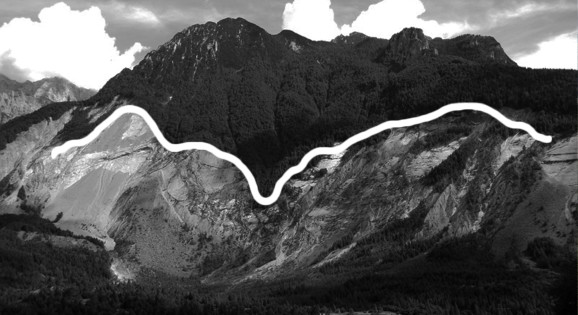
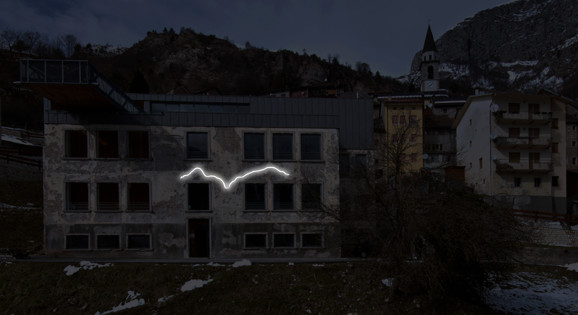
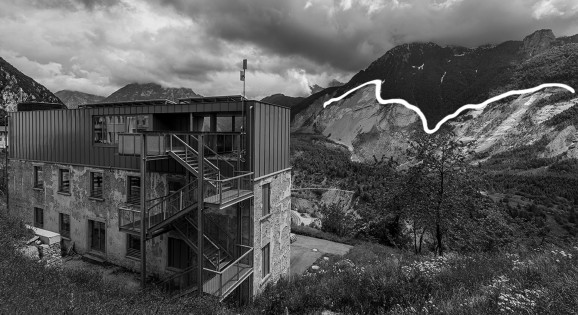
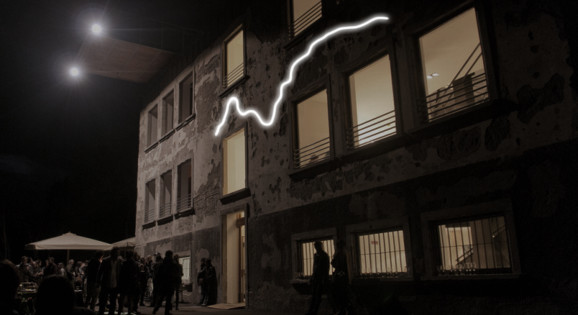
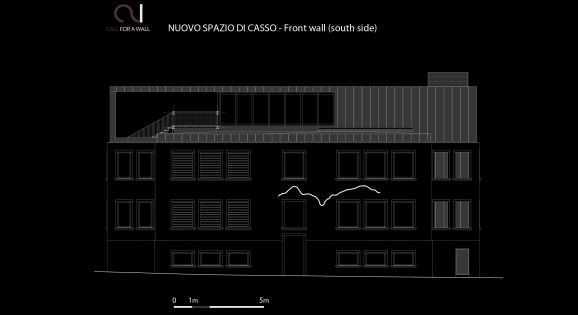
The whole story of the Vajont tells about the encounter and the clash between natural and artificial, and how the two elements have tried and are still trying to co-exist in this area. The Nuovo Spazio di Casso is perfectly in front of the mount Toc and its indelible scar.
Our intervention is to transform the natural sign of the line of separation of the landslide, in an artificial sign, positioning it on the south side of the old school. The two signs, despite being the one facing the other, communicate each other only for few minutes, at dusk, when going to “turn off” the first and to turn on the second. This brief moment of dialogue is the pass of the baton between past and present. The idea is to perform a translation that is not going to overload the aspect in itself already very evocative of the place but that leaves, because of its graphic simplicity, freedom of imagination. The new exhibition space is so transformed into a white sheet where the luminous sign becomes a child’s scribble or the sketch of an artist, both starting point of the creative process.
The presence in the title of the verbs to turn on and to turn, sums up the meaning of the project, that is turning to look back to “turn on” new ideas. Comes into play then a sense of rebirth also entrusted to art, that among all the artifices is the closest to nature.
The sign, a white color neon, will have a total length of 7.5 linear meters (divided into several parts). The thickness will be between 15 and 25 mm according to the technical requirements of the company Neonlauro. The only cost will be the same neon.
–
L’intera vicenda del Vajont racconta la storia dell’incontro e dello scontro tra naturale e artificiale e di come i due elementi abbiano provato e stiano ancora provando a coesistere in quest’area. Il Nuovo Spazio Espositivo di Casso si trova perfettamente davanti al monte Toc e alla testimonianza indelebile che si porta addosso.
Il nostro intervento consiste nel trasformare il segno naturale della linea di distacco della frana, in un segno artificiale, posizionandolo sull’elemento architettonico della facciata sud dell’ex scuola. I due segni, pur trovandosi l’uno di fronte all’altro, dialogano tra loro solo per pochi minuti, al crepuscolo, nel momento in cui sta per “spegnersi” il primo e accendersi il secondo. Questo breve momento di dialogo rappresenta un passaggio di testimone tra passato e presente. L’idea è quella di effettuare un’operazione di traslazione che non vada a sovraccaricare l’aspetto di per se già molto evocativo del luogo ma che lasci, proprio per la sua semplicità grafica, libertà di immaginazione. Il nuovo spazio espositivo si trasforma quindi in un foglio bianco dove il segno luminoso diventa lo scarabocchio di un bambino o lo schizzo di un artista, entrambi punto di partenza del processo creativo.
La presenza nel titolo (Turn) On dei verbi accendere e girare, sintetizza il senso del progetto, cioè girarsi a guardare indietro per “accendere” nuove idee. Entra in gioco quindi un senso di rinascita affidato anche all’arte, che tra tutti gli artifici è ciò che si avvicina di più alla natura.
Il segno, un neon di colore bianco, avrà una lunghezza totale di 7,5 metri lineari (frazionabili in più parti). Lo spessore sarà compreso tra i 15 e i 25 mm di diametro in base alle esigenze tecniche dell’azienda Neonlauro. L’unico costo sarà quello del neon stesso.
2 Responses to kindergarten
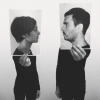
 berlin
berlin 
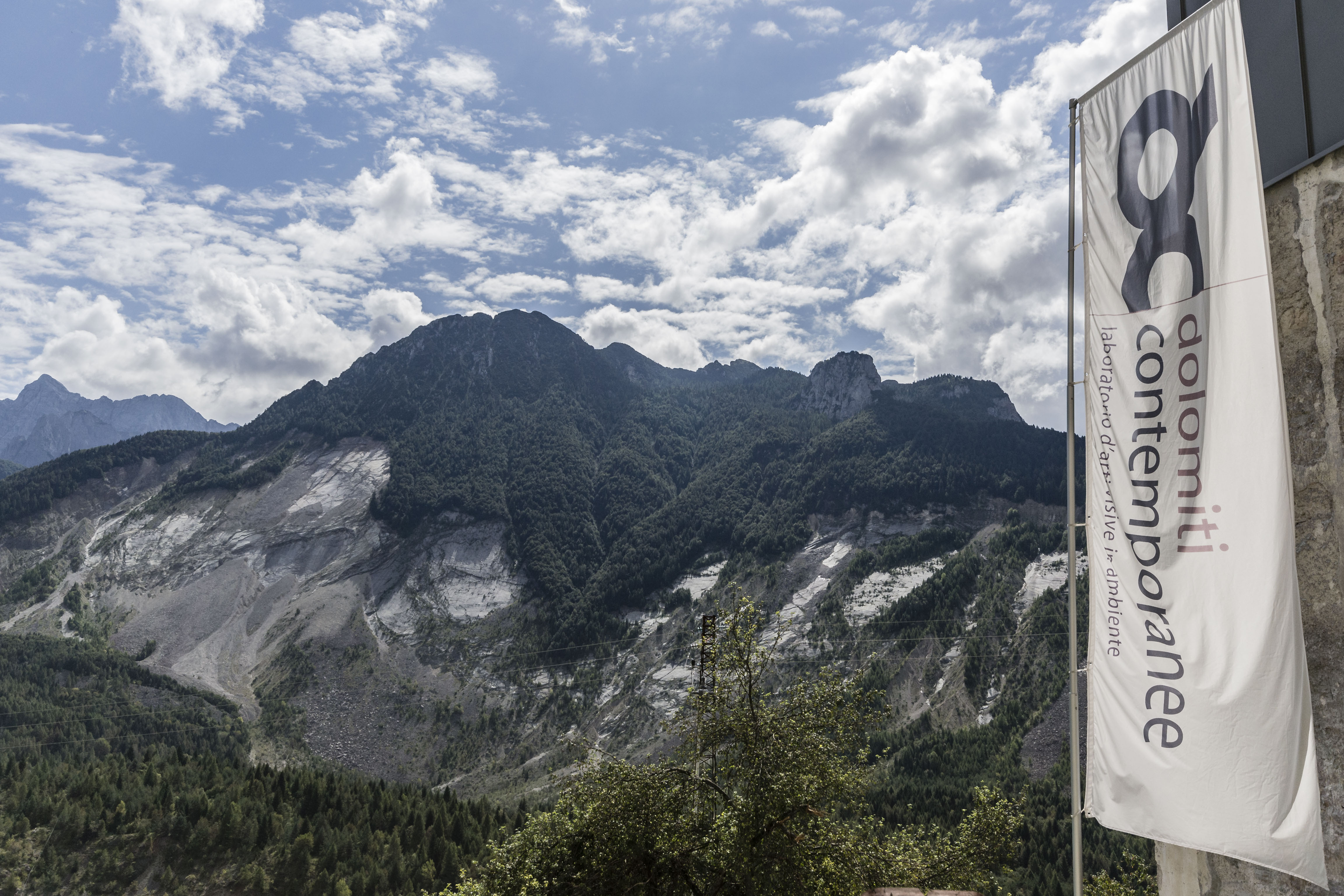
Tuesday, June 15th 2021, 2 – 4 PM, webinar panel:
two calls for vajont: fase _restart.
Vajont: [...]





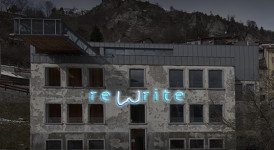
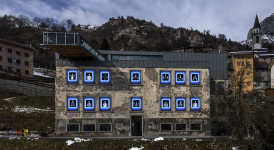
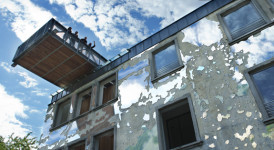

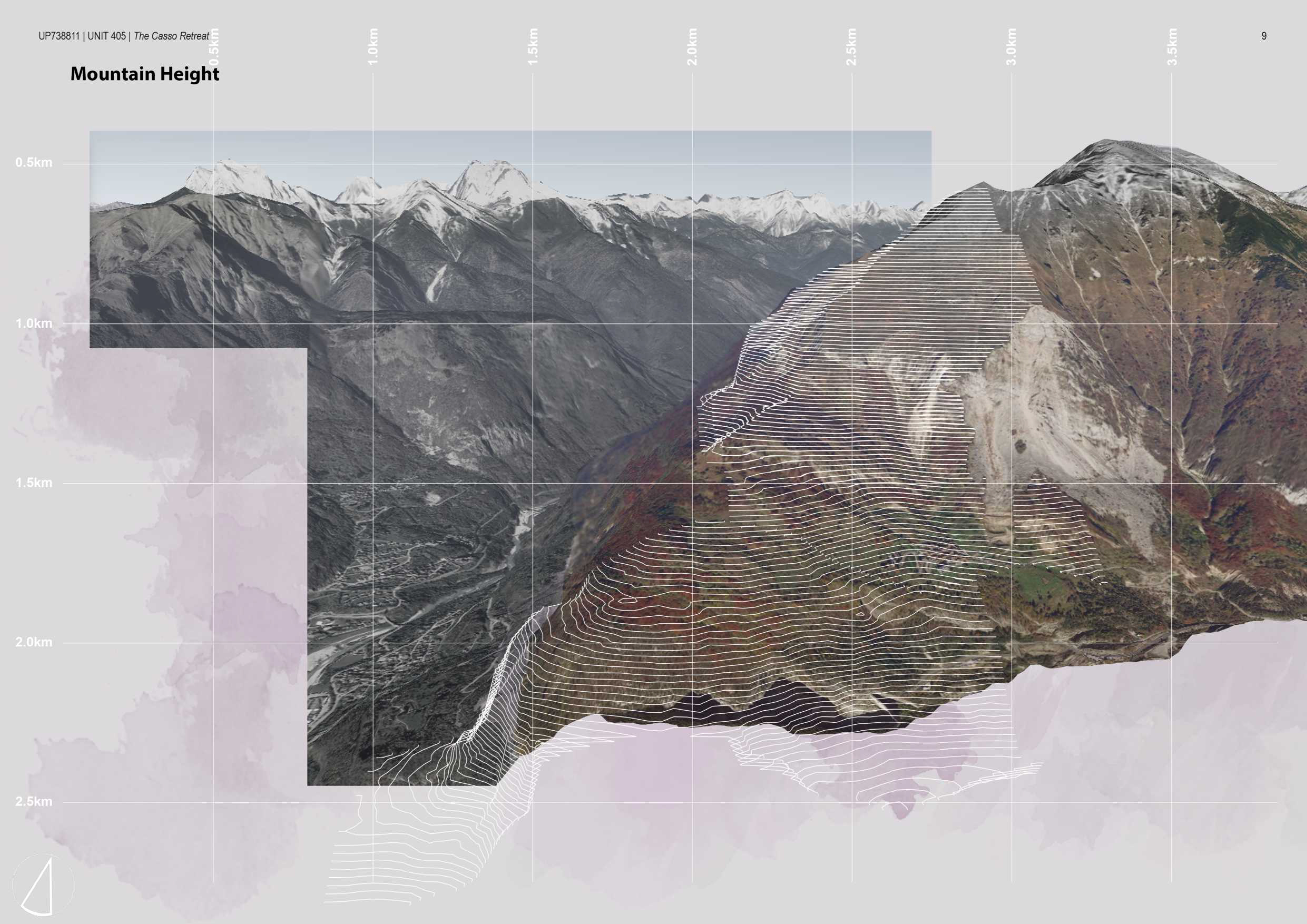








Semplice e profondo
leggero e lineare con un forte e immediato rinvio al paesaggio. mi piace.